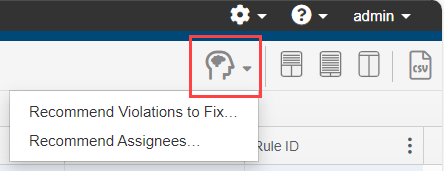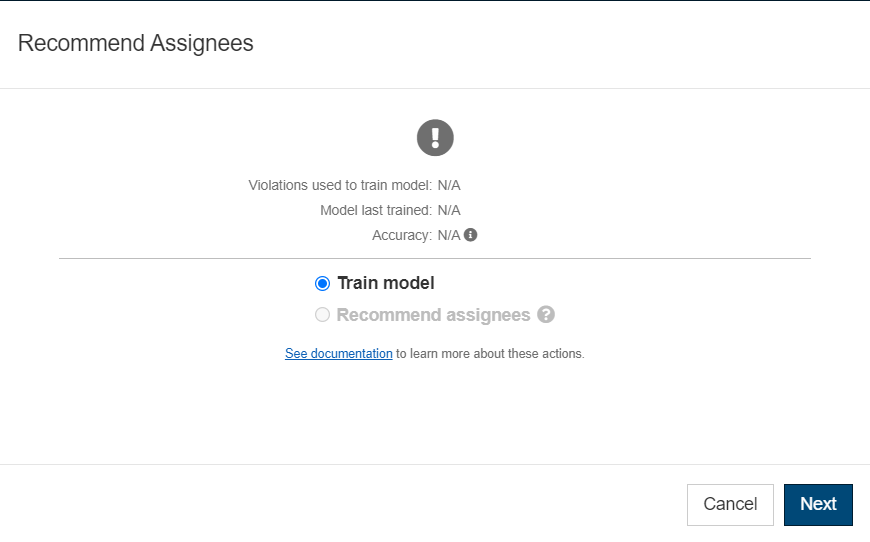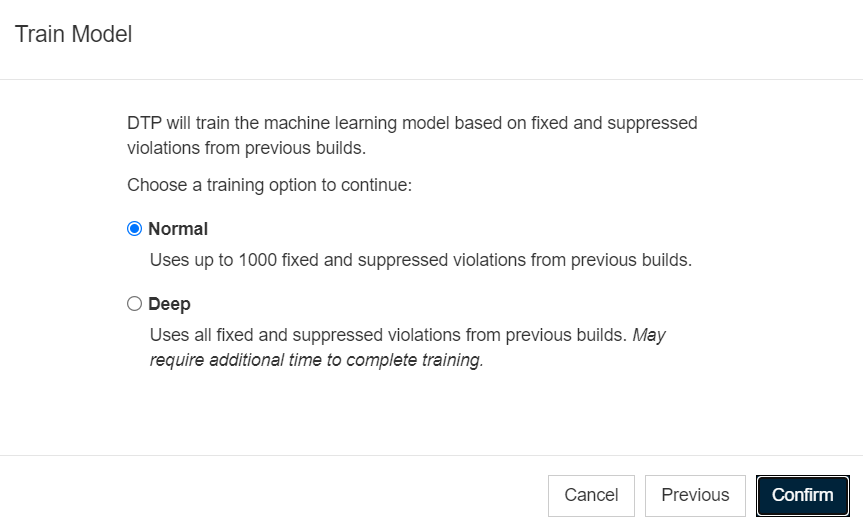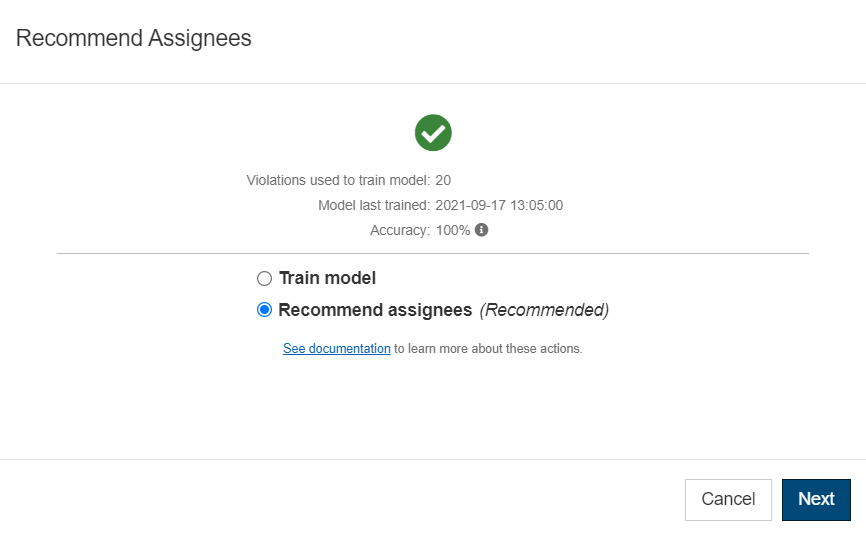In this section:
By default, DTP assigns the violation to the "author" of the violation as detected by the static analysis engine. While this is usually sufficient, there may be times when you want to know who might be best suited to work on the violation. DTP can recommend an assignee based on who has worked on similar violations in the past, the idea being that a developer who has fixed a similar violation in the past will be more proficient with violations of that type, as opposed to a developer with little or no experience with that type of violation and who might struggle to deal with it effectively. If you want to increase the efficiency of your development team, using DTP recommendations can help.
Before you can ask DTP to recommend who should work on a violation, you need to train it using fixed and suppressed violations from previous builds, from which DTP will create a predictive model. This can take several minutes if there are a large number of violations (more than 1000) or a large number of builds (more than 100).



Once you have trained the model, you can apply it to the violations in the filter. DTP will use the model to recommend who should work on the violation, which enables the team to quickly begin working on remediating critical violations. There are two ways to get DTP to recommend assignees:



You can get DTP to recommend assignees by clicking Get Recommendations on the Prioritization tab.

If you have trained the model, recommended assignee will be added to the Recommendations section. If one or more prerequisite conditions have not been met, there will be an info icon to the left of the Recommendations label that you can hover over for details.
You can view recommended assignees for all the violations in the filter in the Recommended Assignee column. The column shows which user DTP recommends should work on this violation. Note that this column is sortable.
